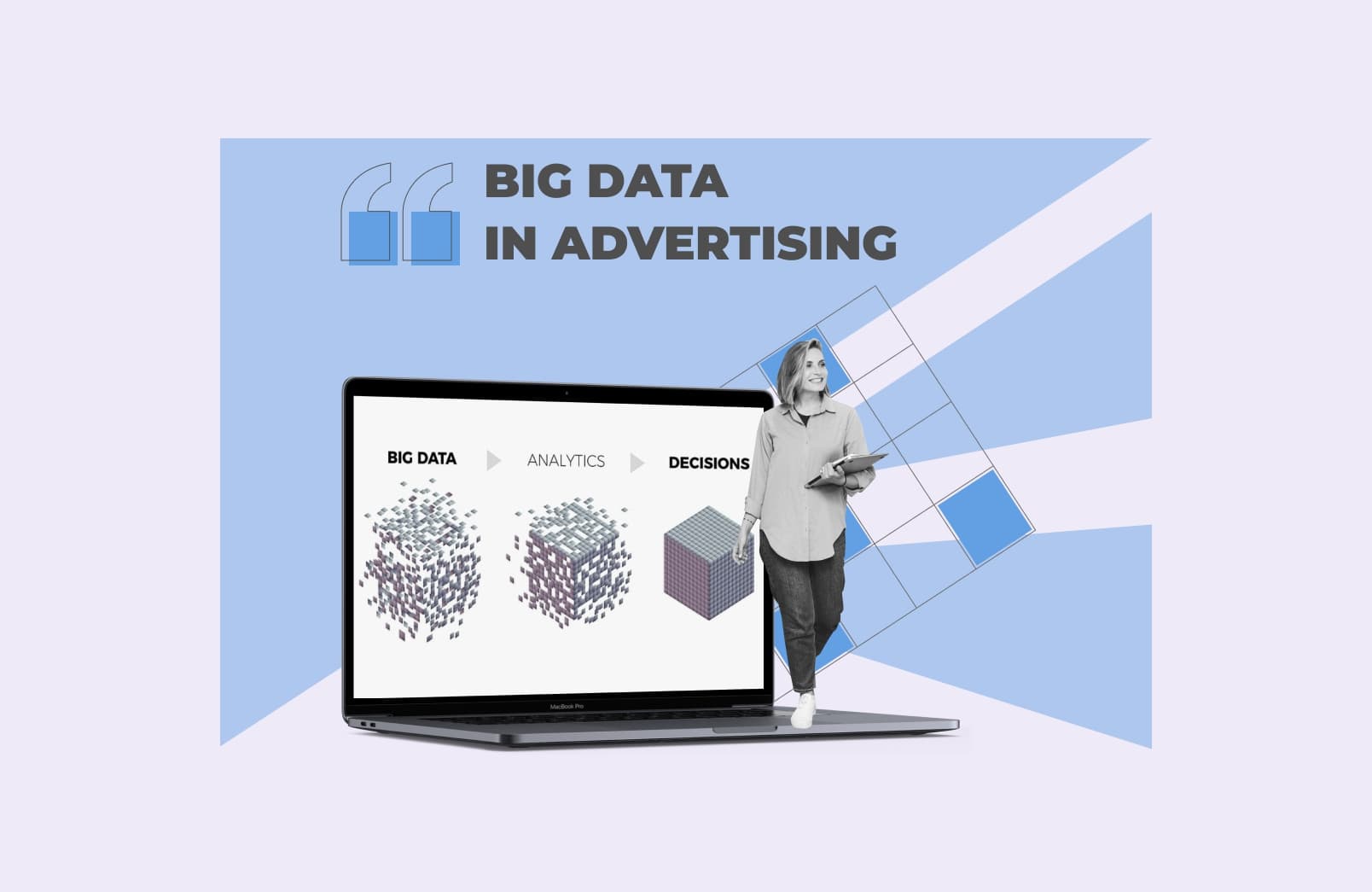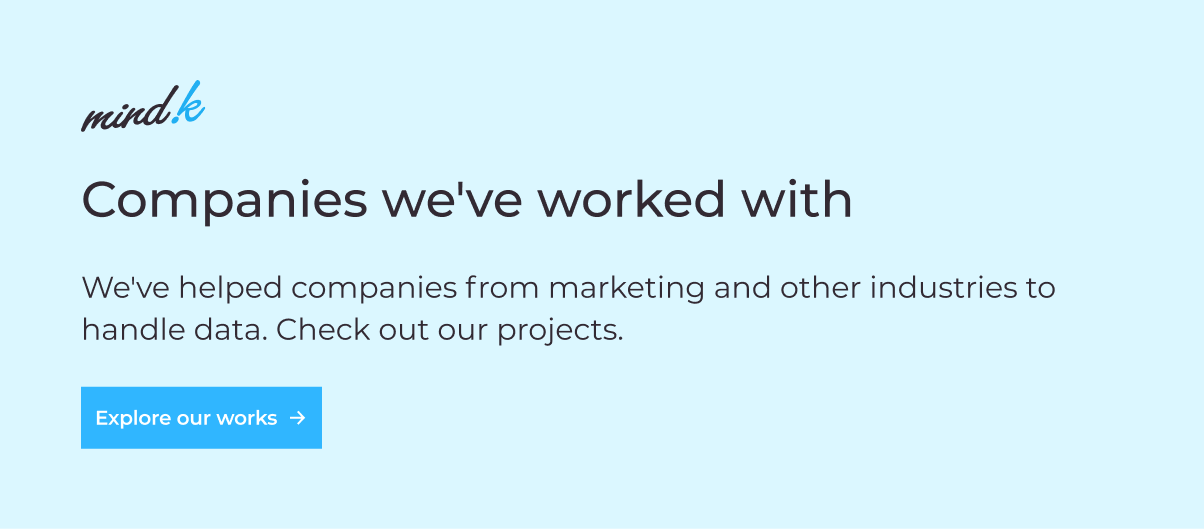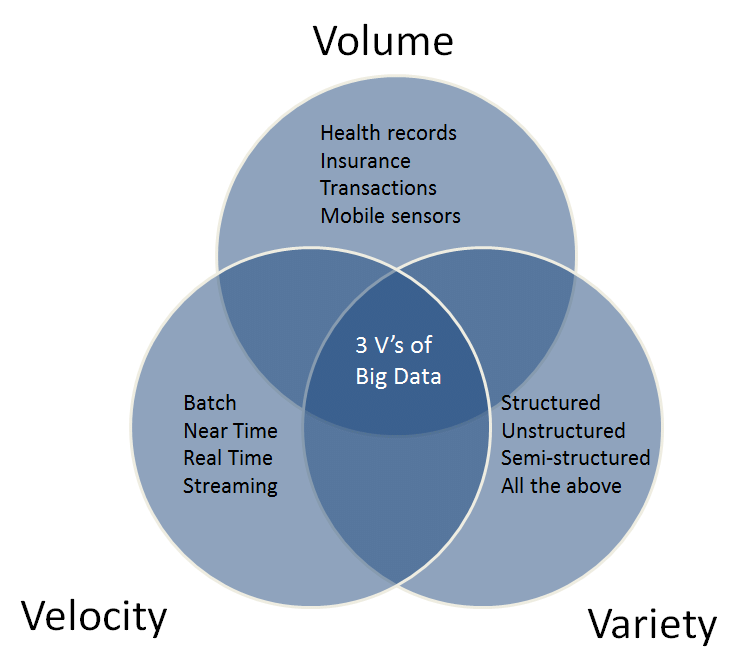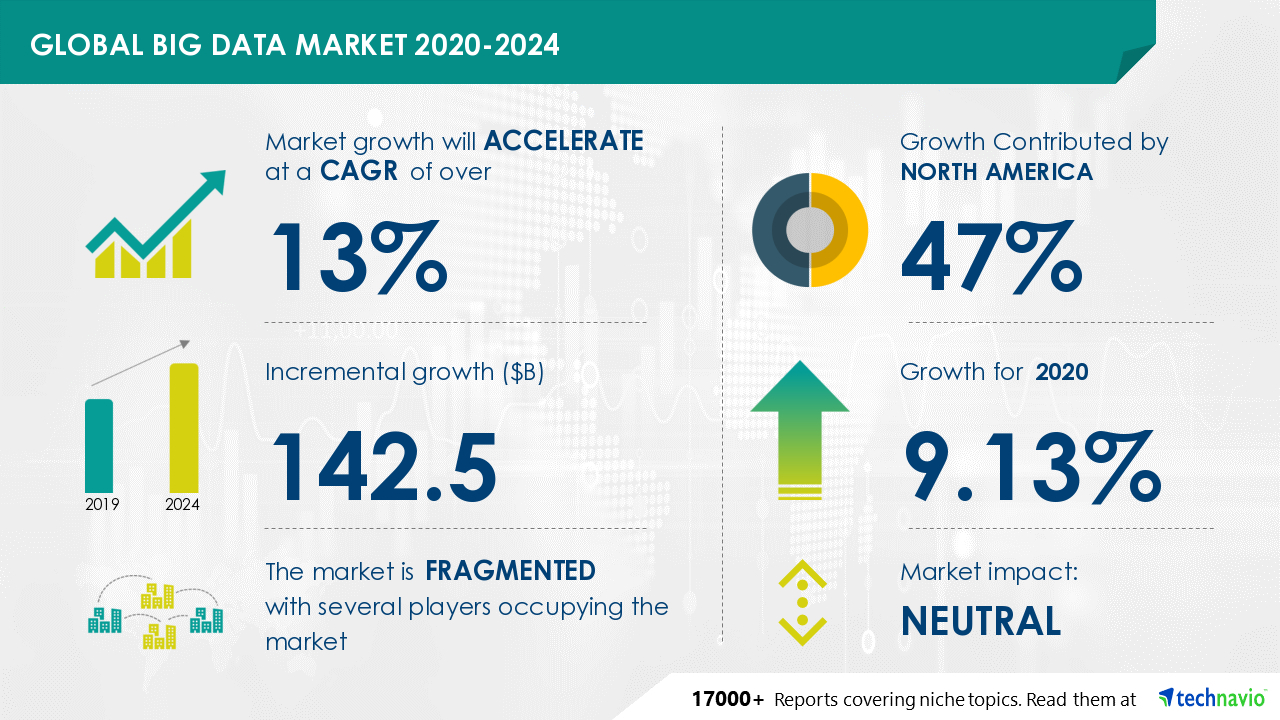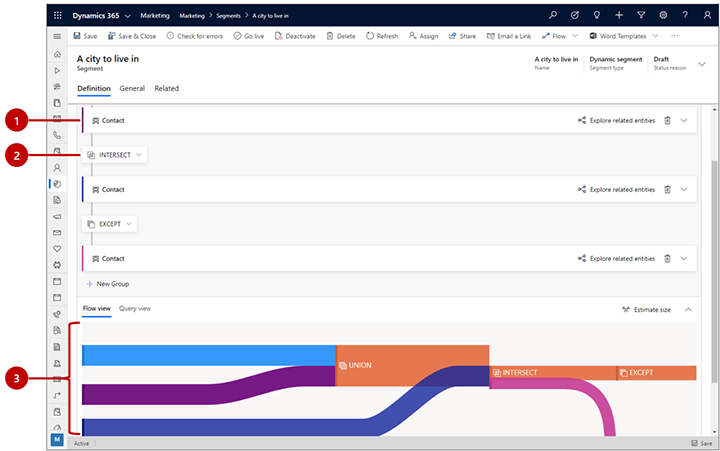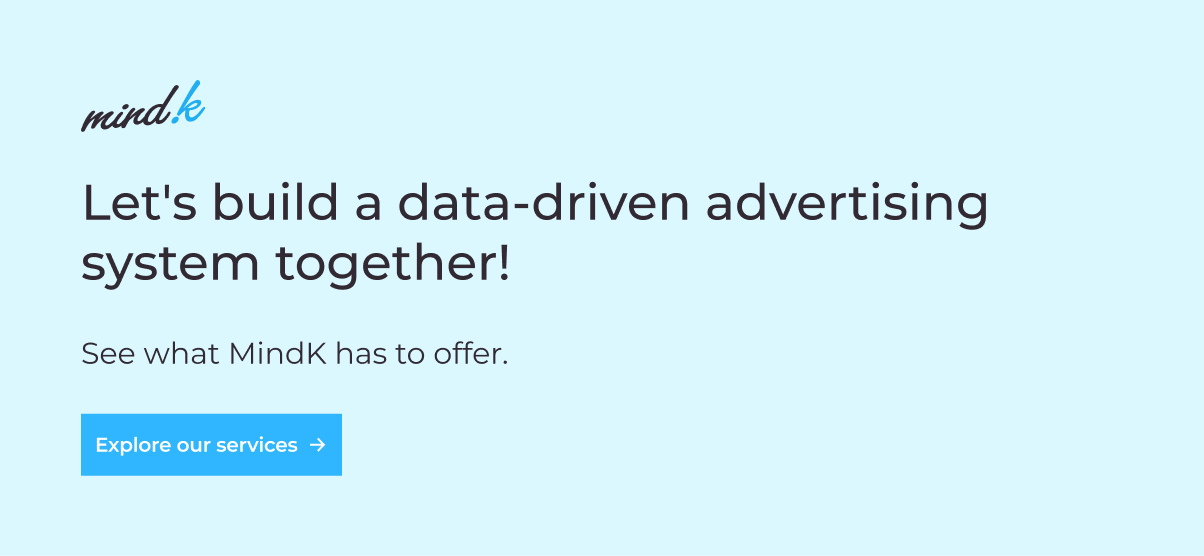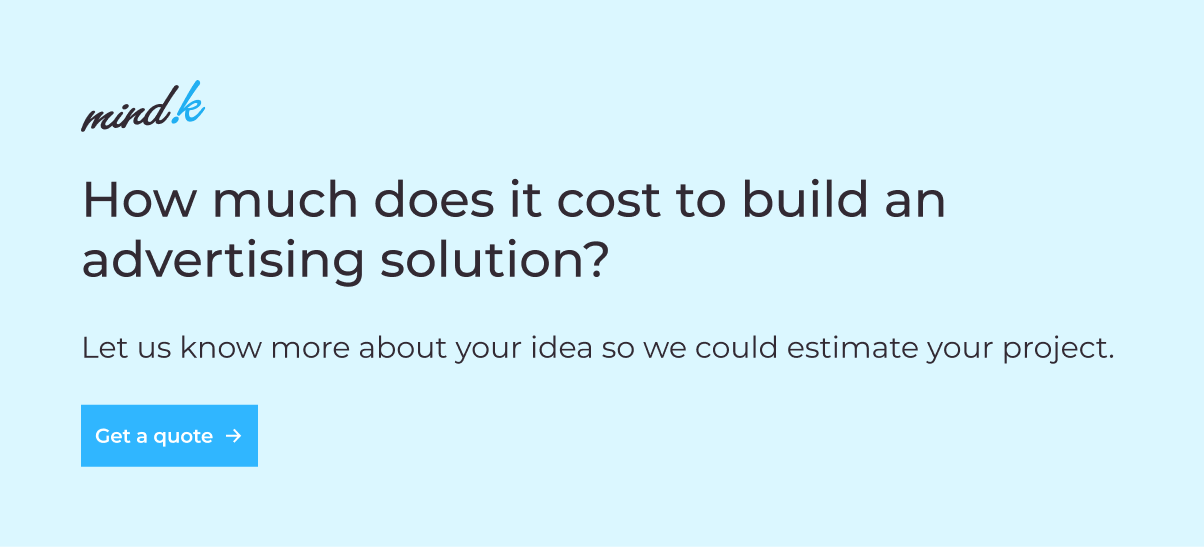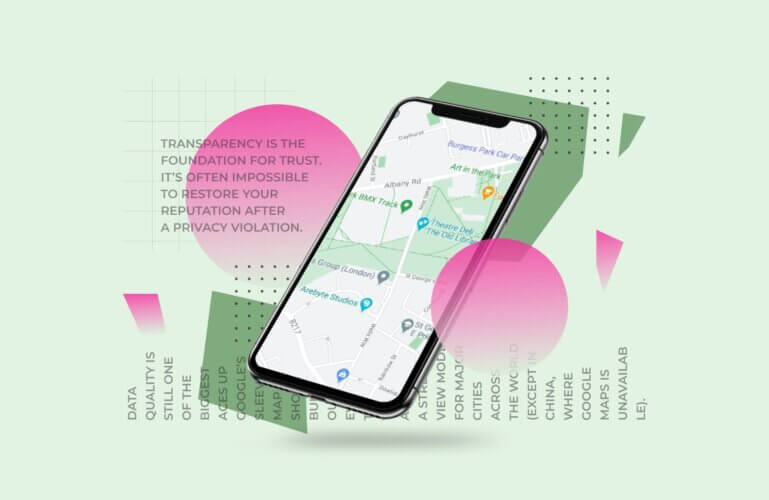Nine years ago, the New York Times announced the beginning of the “Age of Big Data.” Since then, Big Data, from a vague and rather senseless concept, has turned into one of the most important tools for businesses.
At MindK, we develop digital solutions for different companies and noticed that the next challenge most of our clients are seeking to solve, after process automation, is working with data. You can confirm this by taking a look at the latest projects we’ve delivered.
Data has become a valuable resource, a new “oil” of the twenty-first century. It becomes almost impossible to process and analyze big volumes of diverse and rapidly arriving data as in the olden days. Big Data, on the contrary, allows seeing certain and imperceptible patterns that a person cannot see and use them to make data-driven decisions, build prediction models, and much more.
But what is the role of Big Data in advertising industry and is it important for the future of advertising technology? Let’s puzzle it out.
What exactly is Big Data? (in plain language)
Before speaking about the use of Big Data in advertising, let’s first make sure we are on the same page about the concept itself.
Big Data is an umbrella term for the continuous flow of information, technology, and methods of its processing and analysis. Today, people generate data on a regular basis: by using applications, searching for information on Google, shopping online, or just traveling with a smartphone in their pocket. The result is a huge amount of valuable information that can be collected, visualized, and analyzed.
For ease of understanding, imagine a supermarket where all the goods are mixed up and situated in an unusual order: bread is next to fruits, cooking oil is alongside frozen pizza, fire starter fluid in front of the shelf with personal supplies and avocados. Big Data allows everything to be in its correct place and helps you find, for example, nut milk, learn its cost and expiration date, find out who else buys this milk and benefits it has compared to dairy milk.
In short, Big Data is the ability to effectively use the information obtained in a convenient and visual form for solving applied problems and decision-making.
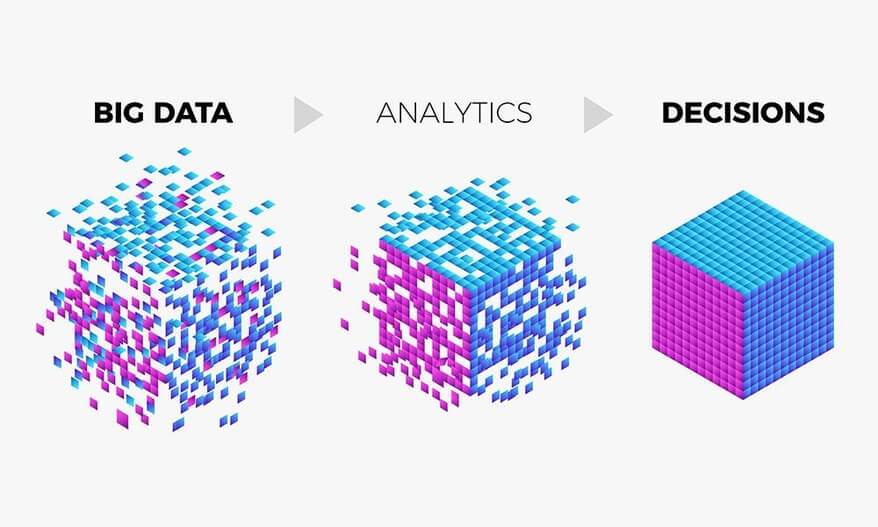
There are three main characteristics of Big Data called the “3 Vs of Big Data”:
- Volume – measurement of volume in a physical quantity that occupies a certain space on the carrier.
- Velocity – regular, real-time updates using smart technology.
- Variety – absolute or partial randomness and diversity.
3 Vs of Big Data
Source: researchgate.net
In addition to these characteristics, there are some others like variability and value, where variability means the ability of data to change depending on external circumstances.
All these characteristics together with huge possibilities for application make Big Data a “tasty little thing” for a number of businesses. In 2020, the global Big Data market has grown up to 9.13%. And in 2021 the spending on Big Data and analytics worldwide is predicted to hit $215 bn.
But do Big Data and digital advertising work hand in hand? Yes, advertising is among the industries that are adopting Big Data at lightning speed. The impact of Big Data on the digital advertising industry is huge – it allows advertising companies to accurately find target audiences anywhere, predict user behavior, choose the right form and content of advertising, and much more.
How is Big Data used in advertising: real-life examples
To be more specific, we’ve singled out some key challenges where applying Big Data hits the spot and helps advertisers to answer such pressing questions like:
- Who to target?
- What ad to show?
- How to measure results?
- How to improve performance?
- How to learn from the past?
Who to target: Big Data allows smart segmentation
One of the most important questions advertisers need to answer when placing an ad is “Who should the ad be shown to?”. Thanks to Big Data, today you can successfully segment the target audience to improve ad performance.
Segmentation means dividing the target audience into several groups. The main reason segmentation is crucial for the advertising industry is the fact that it helps to create a unique selling proposition (USP) suitable for the world people in this sector live in.
For example, the same USP both for young women and mature men is unlikely to be high-performing. It is better to create different USPs for each segment because propositions, advertising creatives, text, pictures, and other factors that influence the conversion will vary.
Traditionally there are four main types of audience segmentation in marketing:
- Behavioral segmentation is usually based on browsing data about online behavior which may include browsing habits, spending habits, purchasing habits, brand loyalty, previous interactions, and many others.
- Social-demographic segmentation including age, education, gender, ethnicity, level of income, and others.
- Geographic segmentation that involves country, region, city, and such.
- Psychographic segmentation including hobbies, lifestyle interests, values, religious beliefs, opinions, preferences, and so on.

Customer segmentation is a powerful approach in advertising that has been showing good results for years. All advertisers use some form of segmentation to target their ads. However, there is a more advanced segmentation approach called dynamic segmentation.
Dynamic segmentation uses real-time data to build ever-changing groups of people. It means that dynamic segmentation technology includes and excludes people from the target segment by constantly checking whether they fail to meet the predefined criteria.
There are already a number of products on the market for this type of segmentation. Among them is Dynamics 365 Marketing from Microsoft that besides creating static segments allows creating dynamic segmentation. It is made using query blocks where the user specifies all the conditions for dynamic segmentation.
Example of dynamic segmentation in Dynamics 365 Marketing
Source: docs.microsoft.com
As a result, dynamic segmentation is able to bring better performance of ad campaigns due to more advanced and smarter targeting.
What to show: Big Data allows hyper-personalization
Big Data technology helps answer this question as it provides valuable insight about demographics, geographic location, likes, and preferences of your potential customers. By analyzing this data, the advertiser can develop more accurate customer profiles to better personalize their ads.
The majority of marketers (60%) believe that personalization is a key component to improve the campaign results. Personalization is a very important factor for Generation Z who grew up on digital and social media and now expect a high level of targeting and personalization. What’s interesting is that 40% of them admit that they would stop visiting a site if it couldn’t “anticipate what they needed, liked, or wanted.”
A great example of using Big Data here is dynamic creative. In simple words, dynamic creative advertising means showing different ads to different people. If everyone saw one and the same advertisement previously, now advertisers have a possibility to show different ads to certain groups of people or even individuals based on parameters like gender, profession, location, device, buying behavior, language, weather, and much more. Dynamic creative is able to perfect your ad performance by fine-tuning:
- ad design for different devices;
- context to ad; or
- stage of the purchase funnel.
For example, dynamic advertising from Facebook allows up to 10 images or videos, and 5 text options including body text, title, description, and call to action (CTA).

Source: hunchads.com
To have the ability to run effective dynamic creatives, most advertisers make use of Creative Management Platform (CMP) and Dynamic creative optimization (DCO). Creative Management Platform is a solution to design and control design versions of the ads needed for a DCO campaign. Dynamic creative optimization, on the other hand, is the real-time technological process that manages hyper-personalized advertising. Simply put, CMP provides the right dynamic design and DCO – dynamic content to the end-user.
Bannerflow platform, for example, allows not only to create a range of ad variations to connect with specific viewers but also to optimize live dynamic creatives in real-time.

Source: bannerflow.com
As a result, by using dynamic creative technologies you can:
- launch ads with a number of different combinations of creatives to serve each particular individual;
- hyper-personalize the advertising in view of customers interests;
- find the best, high-performing combination for your ad campaign to drive performance; and
- improve ROAS by targeting groups of potential customers who are likely to convert.
How to measure: Big Data enables robust attribution models
According to Gartner, about 74% of CMOs are planning to spend more on digital advertising in 2021 than in 2020. But how to evaluate the effective ad channels to understand where to invest more? Which ads are driving sales and which are not?
As we’ve already discussed in our article about Ad Tech challenges and opportunities, everyone in the advertising industry needs transparency. Advertisers no longer are able to justify ad budgets without providing measurable Return On Advertising Spend (ROAS).
The solution lies in attribution that helps to evaluate how the conversion is distributed across different channels. Thus, more advertisers are putting priority on ad measurement and attribution.
The main goal of attribution is to help determine the actions of the person which lead to the desired result starting from the moment a person clicks the ad and the conversion. Most traditional rule-based attribution models which mostly rely on cookies, first-click, last-click attribution are not as effective as wished. Facebook states that almost 45% of digital touchpoints are missed by traditional measurement tools.
Big Data offers more effective approaches to measuring ad results and attributions. One of them is the data-driven attribution model. This model is based on Big Data and aims to understand the links between advertising itself and the customer’s response. Unlike the rule-based attribution, the data-driven model takes into account myriads of data, for example:
- number of ad interactions;
- ad display order;
- advertisement itself;
- device used; and
- other factors determining which keywords and clicks are most effective for achieving results and similar.
As a result, data-driven attribution models allow companies to understand the way people convert, determine top-performing ads, the most effective ad channels, the best time for ad display, the best locations to target, and a lot more than this. The result is the transparency of advertising results and an optimized ad budget.
Tech giants like Google and Facebook for example, already offer data-driven attribution models in their solutions. In Google, a data-driven attribution model is available in Google Analytics 360, Google Ads, and Campaign Manager. Attributions in Facebook and Google Analytics are very similar but have some differences. Google Analytics, for example, measures by session, while Facebook both by session and by impression.
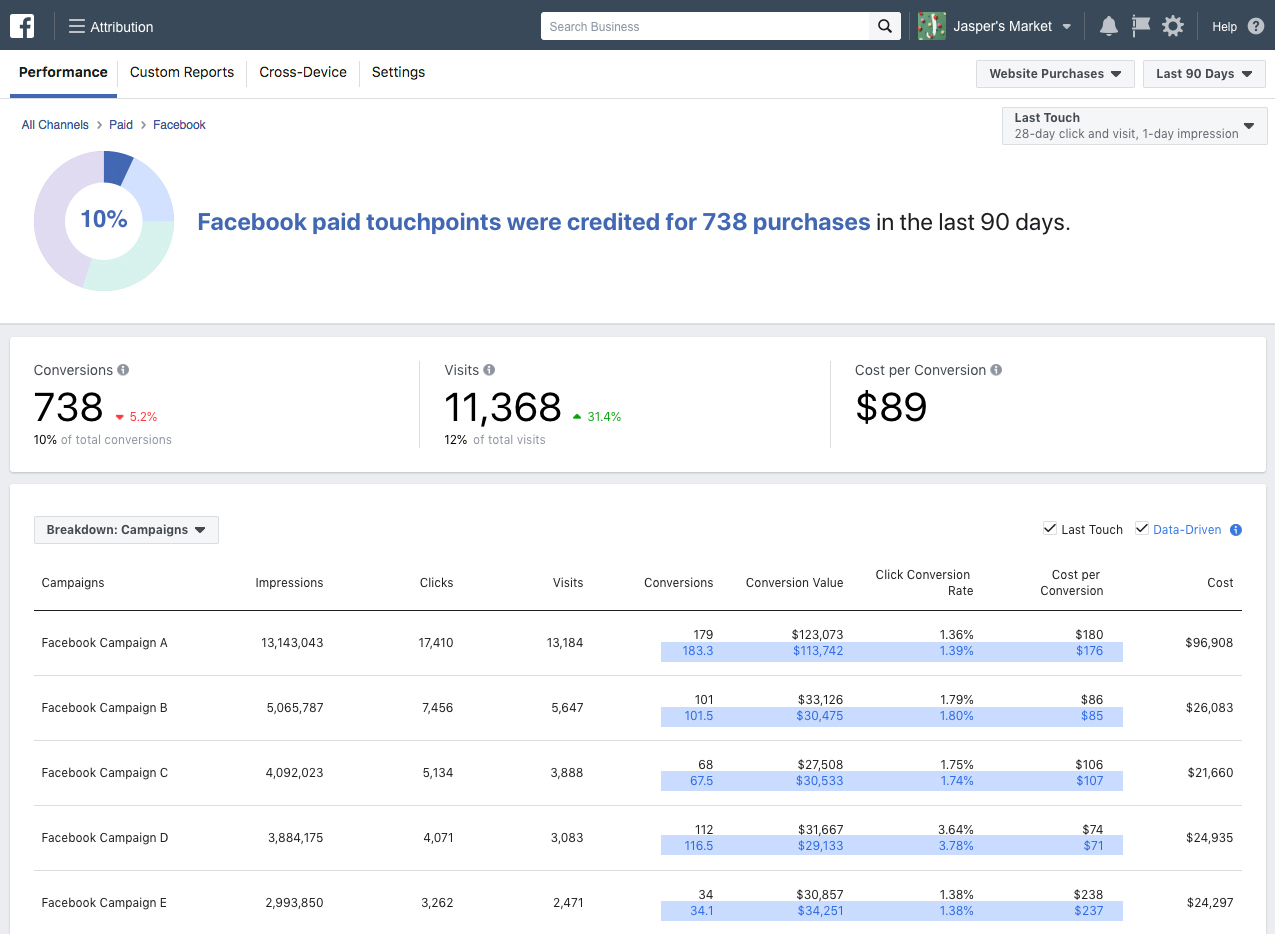
Source: facebook.com
At MindK we also helped our client who workes with TV and radio ads in the United States to solve the challenge with measuring ads results and attributions. The client required a strong automation tool able to help them build, support, and analyze radio and TV advertising campaigns in no time. As a result, we build a data-driven marketing attribution platform, called AIM Analytics, that allows the company to track both ad successes and failures and come up with winning advertising strategies again and again.
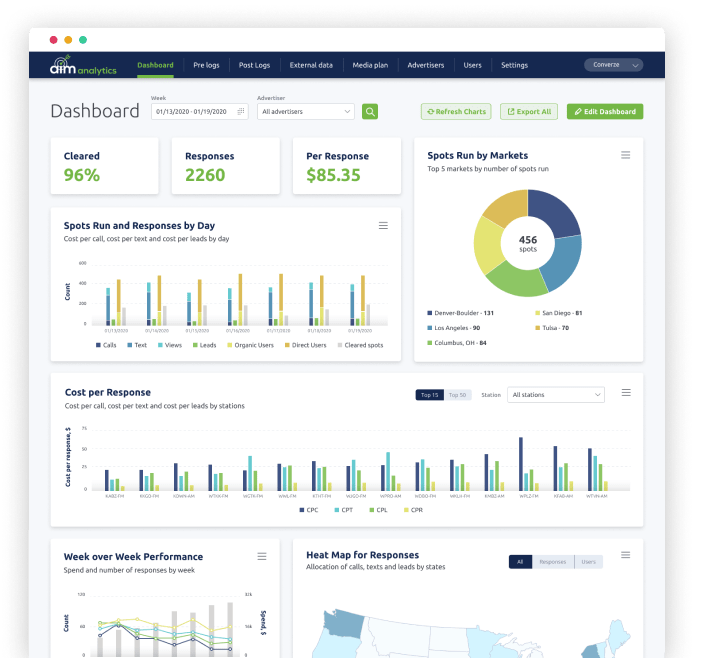
Check out a detailed project overview
How to improve: Big Data allows bringing the most valuable ad data right at your fingertips
Digital advertising agencies use advertising data analytics to conduct a comprehensive analysis of all ad campaign indicators. The main problem with data is that almost from 80% to 90% of all the data both collected and generated by organizations is recognized as unstructured. Worse still, its volumes are growing rapidly.

Source: docs.paperspace.com
The good news is that by means of data analytics, we are able to turn the unstructured data into a structured one that is easier to understand. The main goal of big data analytics in advertising is to monitor, identify and correct mistakes made when setting up an advertising campaign, as well as to increase the ROI.
It is pretty straightforward here – if you can structure, visualize, and analyze the data, you can gain valuable insight into what your audience wants and needs. It likely will influence your advertising strategy, make your efforts more relevant, ads more effective, and ultimately more profitable.
Here at MindK, we face the need to apply data analytics in every project we take (and this need is not only relevant for the advertising industry). For example, one of our clients faced the challenge to analyze the results (log data) of the ads that are running on hundreds of radio stations and channels. These stations send the log data in different formats, which makes the information very hard to analyze. We build a system that transforms this unstructured raw log-level data into clear and transparent information to better understand ad performance.
An intelligent marketing attribution platform we’ve already mentioned in the previous paragraph provides a 360-degree ad campaign analytics that takes into account a myriad of variables: copy, stations, formats, creative, length, and so forth. All this information is presented in the form of graphs, diagrams, reports, and heatmaps that bring all the important ad performance metrics together.
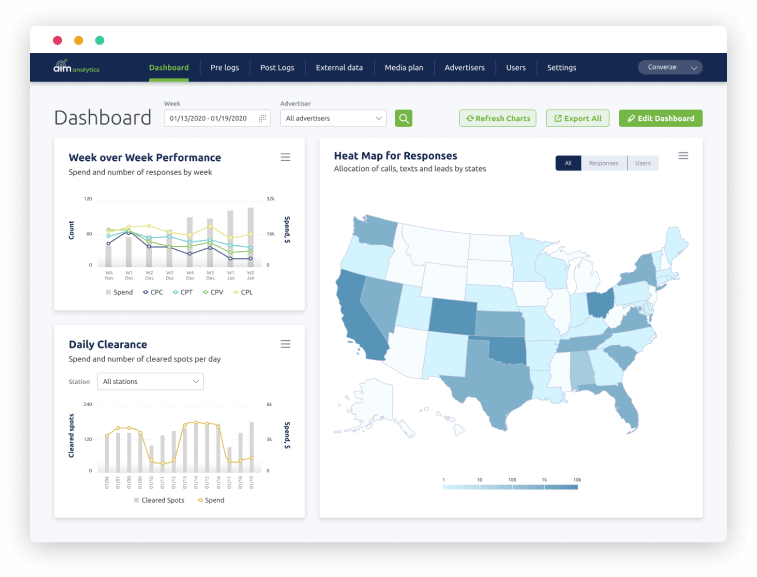
How to learn from the past: Big Data unlocks the power of predictions
Predictive advertising involves the use of real-time predictive analysis technologies based on behavioral patterns seen in historical data to solve marketing problems. Such analytical tools are not new and are widely used, for example, by investors to predict the situation on the stock exchange, or by meteorologists for weather forecasting.
Predictive advertising is a powerful combination of Big Data and machine learning. To analyze information and make “predictions”, advertisers use a cloud-based set of algorithms, platforms, and databases which is called a predictor.
The predictor automatically processes a huge amount of data and, based on it, makes real-time assumptions about any given situation in the future. Those predictions can be used for a variety of purposes, from understanding who is likely to click on an ad to assuming whether this certain click will end up in conversion.
Here are only a few examples of how advertisers are using predictive analytics:
- Creating look-alike audiences that help companies expand their advertising message to audiences that may potentially become loyal customers. You can hardly guess that, for example, Facebook Similar Audiences as well as Google’s Lookalike Audience are using predictive advertising to analyze the behavior of the audience and anticipate needs thus increasing click-through rates of the advertisements.
- Improving cross- and up-selling: by analyzing buying behavior and predicting future buying patterns, advertisers can create high-quality content specifically for people’s buying habits. For example, Amazon has already been using predictive advertising technology for cross- and up-selling.
- Optimizing ad campaigns: by means of predictive bidding technology, the bids can be adjusted in real-time based on different factors like information about the session of the user or similar. Such an approach allows Bing Ads and Google Ads to suggest click and conversion-based bidding strategies by adjusting bids with an eye on users’ predicted tendency to click or convert.
- Retargeting: unlike typical retargeting when advertisers use data about previous user actions, predictive retargeting enriches this data with intent user signals to widen the targeting capabilities. For example, Criteo Predictive Search successfully used machine learning to re-engage high-value users by means of Google Shopping campaigns.
- Reducing ad spend: all the predictive advertising approaches, from predictive targeting to bid adjustments, allow marketers to reduce their wasted ad spend while driving more ROI for their ad campaigns. IBM Watson Advertising states that it helped its clients to experience a minimum 25% increase in ad performance.
The biggest edge of predictive advertising is that it can bring value to almost any advertising campaign. Media advertising, for example, in spite of some specific challenges, has room for opportunities.
Among the latest interesting news in this field is the fact that ad and innovation testing platform Zappi has recently launched a predictive advertising tool called “Zappi Amplify TV” focused on predicting TV ad effectiveness and return on investment. The system was tested in partnership with PepsiCo and other global consumer brands. The system analyses key ROI-driven areas like reach, resonance, response, risk, and return, as well as measures creative sales impact and creative brand impact.
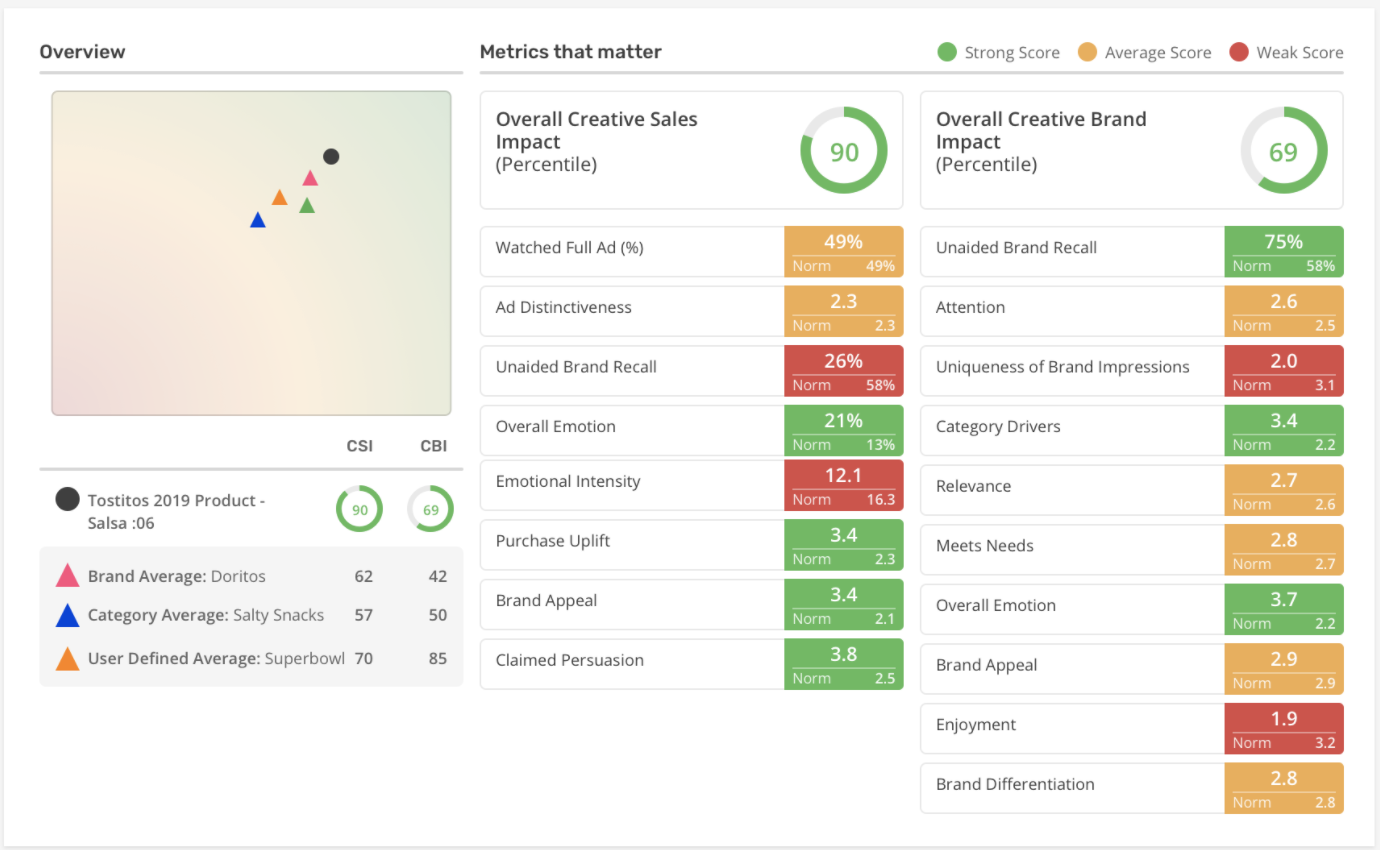
Source: learn.zappi.io
Invest in technologies to make the best use of data
Today, we have trillions of gigabytes of data that need analysis. This amount will continuously increase. For marketing and advertising, this means that as time goes by, the need for advanced tools to collect, store and analyze data will grow too. It’s safe to say that now is the right time for an advertising industry to invest in ad solutions specifically tailored to handling Big Data.
If you’ve already felt the urge of building an intelligent solution for advertising to gain maximum benefit from the data available, then the MindK team is happy to become your development partner. We have experience in building solutions for marketing and advertising and possess qualified resources to develop a system tailored specifically to your business needs. Check our Ad Software Development services.
